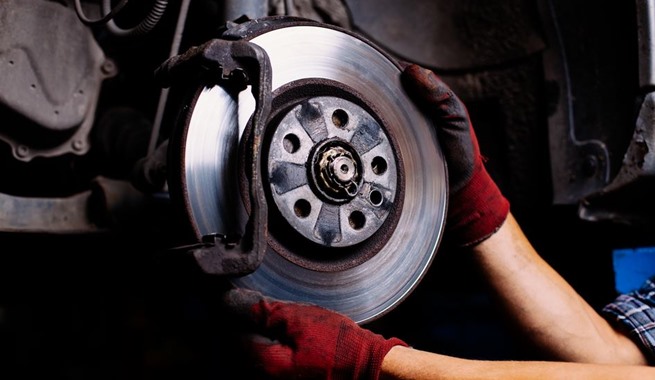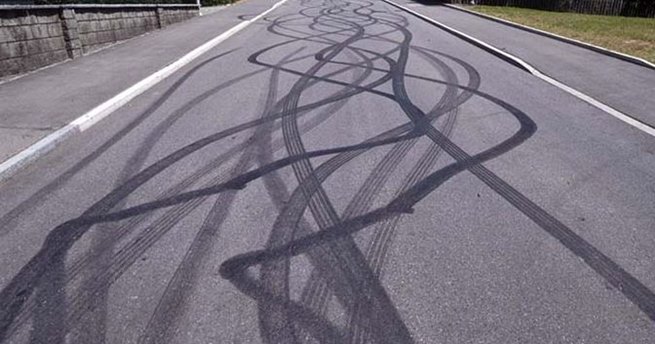 I hope you’ll never experience the heart-sinking sensation that grips you when you step on your brake pedal… and nothing happens. That’s when you learn to really appreciate your car’s braking system!
I hope you’ll never experience the heart-sinking sensation that grips you when you step on your brake pedal… and nothing happens. That’s when you learn to really appreciate your car’s braking system!
The brakes are one of the most important parts of your car, but not all drivers know how to care for them or how to troubleshoot problems.
The braking system in a gist
Most cars today have rotor or disc brakes. In this system, the wheels are attached to metal discs, or rotors, that spin along with the wheels. When the brake pedal is pressed, brake fluid flows from the master cylinder and applies pressure onto the pistons inside calipers. The pistons then push brake pads against the rotors or discs to slow or stop your car.
Calipers with their pistons are tough guys. They usually last as long as the car does, so let’s focus on the three other components that ensure smooth functioning of the braking system: brake pads, brake fluid, and rotors.
Brake pads
Brake pads create the friction that slows down the rotor when you need to stop. This is a consumable item, designed to be replaced regularly. Just how often depends on the type of brake pads and your driving style. Rule of thumb is to check them at least once a year. Consult your car’s manual for details and listen to your car. If you hear a shrill, high-pitched squeal every time you press the brake pedal, that’s a sign that the brake pads are wearing out.
Brake fluid
If you notice that you need to apply a different amount of pressure on your brake pedal, or if the pedal goes further down than usual, you may have a brake fluid problem. Low brake fluid can indicate that brake pads are wearing thin or that there is a leak. By all means consult your car’s manual, but also bear in mind that even checking the brake fluid level requires special precautions. So, a visit to a mechanic may be your best option!
Brake rotors
Brake rotors or discs last through several sets of brake pads, but they need to be checked from time to time for wear and warping. A steering wheel that “wiggles” when you stop the car or a grinding noise that issues from your car when you press the brake pedal can indicate that your brake pads are won out and that your rotors are taking a brunt. Worn rotors can sometimes be “turned” – that is, shaved down until they are smooth.

How to save your breaks
Your braking system can send you other warning signals, besides odd noises and unusual “feel” of the brake pedal. If your car starts to shake or pull to a side after you brake, or if it leaves oily residue on the pavement, or if your brake warning light comes on, it is time to visit a mechanic.
The only way to avoid making too many visits of that kind and to extend the life of your car’s braking system is to drive well. That means driving smoothly, anticipating what lies ahead and adjusting your speed in order to avoid sudden stops. It’s as simple as that.
In case your brakes fail
Brake failures are not a common occurrence. However, if your brakes ever do fail to respond when you press the pedal, there are several things you can do:
- Check the space under the brake pedal (use your left foot, or your passenger).
- Pump your brakes, pressing and depressing the pedal several times in quick succession. Note that this may not work on some anti-lock brakes (ABS).
- Shift into a lower gear to have the engine slow the car. Downshift smoothly through the gears, going one by one. If you downshift too quickly, you could lose control. Most automatic transmissions also allow you to manually select one or more lower gears. (Note that downshifting instead of braking on regular basis is a contentious issue in driving circles, so do your own research!)
- Slowly apply the hand or emergency brake. This is best done in conjunction with downshifting, after the car has slowed down. If you apply the handbrake quickly or at a high speed, you may lose control of your car.
- If you have space, try swerving left-right. Expert drivers may even go into a controlled skid or spin.
- Switch on your hazard lights as soon as you regain presence of mind. You may as well open all windows to make your car less aerodynamic.
Since being prepared for emergences makes you a smarter driver, taking an advanced driving course is always worth your while!









